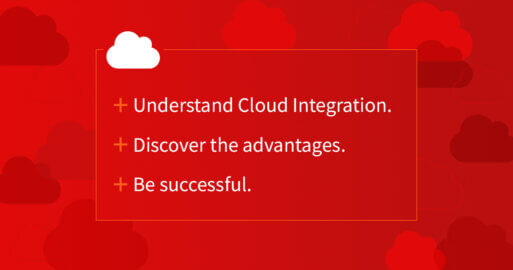Bits and Bytes and Green Solutions: The Importance of Sustainability in IT

In recent decades, IT has triggered a revolution that has profoundly changed our daily lives and the way companies operate. But this technological progress has not been without environmental impact. With the increasing reliance on technology and the exponential amount of data being generated on a daily basis, the issue of sustainability in IT is also becoming more important. The IT industry was once hailed as a driver of efficiency and innovation. Today, it faces the challenge of minimizing its carbon footprint and finding more sustainable ways to develop and use technology.
In this blog, we will look at solutions that drive digitalization through sustainable practices and enable a greener future of bits and bytes. From energy-saving hardware to eco-friendly IT infrastructures, there are a variety of ways to help make IT more sustainable. Let’s get started: What are the challenges and opportunities in shaping a more sustainable future in IT?
Through sustainability in the IT industry, we can minimize our environmental impact and also shape a future-proof technological landscape that protects our planet’s resources, is innovative and meets customer needs.
What is sustainability?
Sustainability in IT, as well as in the private and business environment, is increasingly coming into focus for a variety of reasons. These include the availability of resources for current and future generations, environmental protection, social justice, cultural preservation and legal and ethical aspects. According to the German Federal Ministry for Economic Cooperation and Development, sustainability or sustainable development means “satisfying the needs of the present in such a way that the opportunities of future generations are not restricted.”(1)
The three pillars of sustainability
Sustainability encompasses a multi-layered concept based on three pillars: Economic, Ecological and Social. These pillars form the foundation for decision-making and actionable guidelines that create the basis for balanced and sustainable development at both an individual and organizational level.

In this blog, we focus on the ecological pillar of sustainability. It should be noted that sustainability in IT is not only worth striving for and desirable for the image of a company. It can also be economically profitable in terms of process optimization, cost savings and resource conservation.
Why is sustainability in IT important?
Today’s IT encompasses far more than the classic information and communication technology with a PC or laptop, printer and wired telephone. A large number of devices, processes and systems need to be networked with each other and entire companies or even ecosystems need to be integrated with each other. Buzzwords such as digital currencies, e-commerce, Industry 4.0, smart cities, e-agriculture and smart farming, Procurement 4.0, blockchain, artificial intelligence (AI) and disruptive business models are shaping the technological discourse.
IT as both part of the problem and solution
The transformation to a climate-neutral and sustainable society is hardly conceivable without advancing digitalization. On the one hand, digitalization improves our lives, optimizes work processes and thus contributes significantly to a sustainable future by saving resources. On the other hand, it also generates immense amounts of electronic waste, energy consumption and the resulting environmental impact. The enormous demand for computing power, the use of non-renewable resources for the production of electronics and the need to store data securely and efficiently pose urgent questions for the industry regarding its responsibility for the environment.
It is clear that the IT sector itself consumes a considerable amount of resources and generates climate-damaging emissions. At the same time, however, IT also holds the key to overcoming these challenges. Companies with efforts to contribute to sustainability in IT are faced with the task of not only minimizing their own ecological footprint — they must also develop long-term solutions that help other industries on their own sustainability journey. This even makes the IT industry a driver of sustainability. As part of both the problem and the solution, the IT industry has a special responsibility in shaping a more sustainable future.
Resources in the IT industry
In order to understand the areas in which resources can be saved for a sustainable IT industry, it is first necessary to determine where resources are generated or wasted. The considerable consumption of resources in the industry (3) is not only due to the operation of data centers, but also encompasses the entire supply chain, including the manufacture, transport and disposal of IT products.
- Resource consumption before operation: Before resources can be consumed in IT operations, the end devices required for this must first be manufactured. Many raw materials are required for the production of hardware components, from computer chips such as semiconductors to housings, including rare earths, lithium, cobalt and copper. These are usually only available in limited quantities and are often mined under ecologically and socially problematic conditions. In addition to the manufacture of the physical hardware, resources are also consumed and emissions emitted during the worldwide transportation of the products.
- Resource consumption during operation: Data centers and servers require massive amounts of electrical energy during operation in order to process the rapidly increasing data streams. The energy requirements of some data centers already exceed the electricity needs of entire cities.(4) These systems generate a great deal of heat, which is why a considerable amount of energy and water, itself an increasingly scarce resource, are required for cooling.
- Waste of resources after operation: After operation, no new resources are consumed. Nevertheless, it is not in the interests of sustainability if resources that have already been exhausted are not disposed of and recycled properly. Many raw materials can be reused elsewhere. This waste of resources from short-lived hardware contributes massively to the generation of electronic waste (e-waste) in the IT sector.
The IT industry faces many resource challenges in its sustainability efforts. But how does IT actually contribute to greater sustainability?
Synergies between digitalization and sustainability
Let’s take a closer look at the innovative ways in which sustainable hardware and software solutions can make our digital world more efficient and environmentally friendly. Here are some exciting ways in which the IT industry can promote sustainability.
Sustainability in IT through optimized hardware
The development of sustainable IT hardware requires a holistic view of the entire life cycle of these devices, from production to disposal. What are the options for making IT hardware more sustainable?
- Long-lasting products: Hardware can be designed to last longer. Modular and easily upgradable products allow users to use their devices for longer without having to replace them completely.
- Energy efficiency: Hardware can be made more energy-efficient by using energy-saving components and technologies. This applies in particular to computer, server and network equipment.
- Recyclability and circular economy: Choosing materials that are easily recyclable and designing hardware that can be easily disassembled and recycled reduces electronic waste and promotes the circular economy. Manufacturers can develop programs to remanufacture and reuse hardware components to extend the life cycle of products.
- Using renewable energy and reducing emissions: Manufacturers can use renewable energy sources to power their production processes and reduce emissions during manufacturing. Effective cooling technologies and renewable energy sources can help to create sustainable data centers. For example, instead of air conditioning, innovative cooling technologies such as the use of water or air are used. These help to cover the energy requirements of a data center with renewable energy such as solar energy or wind power.
- Reduction of harmful chemicals: The use of environmentally friendly and non-hazardous materials in hardware production minimizes the environmental impact and reduces the risk to people, as well.
- E-waste management: Manufacturers can develop programs to take back and dispose of electronic waste for their products. This ensures that old devices are properly recycled or disposed of. Unwanted heat from data centers can be used to warm homes or entire cities. Reducing packaging material and using environmentally friendly packaging also helps to minimize waste.
- Ethical supply chains: Ensuring ethical sourcing of raw materials and components is important. In Germany, the Supply Chain Duty of Care Act is intended to ensure that raw materials are mined or produced under fair and sustainable conditions.
- Transparency and certifications: Providing information on environmental impact and sustainability practices, as well as certifying sustainable hardware, helps consumers choose environmentally friendly products. These certified products then have a competitive advantage over non-certified companies.
If the hardware alone becomes more environmentally friendly, a great deal has already been achieved. However, software is another important factor for sustainability in IT.
Sustainability in IT through optimized software
Here are some ways in which software can be made more sustainable:
- Energy efficiency: Software can be developed in such a way that it consumes less energy. For example, energy efficiency can be improved by optimizing calculations and processes. This can mean avoiding unnecessary background processes on devices or developing software in such a way that it switches to “sleep mode” when it is not being actively used.
- Recycling of code: Developers can create reusable code to reduce the need for reprogramming and therefore development time, conserving resources. Modules that have already been created can be reused, which promotes consistent and reliable software development.
- Software updates and longevity: Manufacturers can also design software updates to be resource-efficient. For example, only changed parts of an application can be updated instead of reinstalling the entire application. Updating software also avoids e-waste by continuing to support older hardware instead of replacing it with new devices. The software should therefore be designed in such a way that it can be used over a longer period of time.
- Virtualization and cloud computing: By consolidating servers in virtualization environments, i.e., operating several virtual servers on one physical hardware, data centers can be better utilized and hardware can be saved. Companies can also reduce their own IT infrastructures by using cloud services. This reduces resource consumption and CO2 emissions. Cloud computing enables IT resources to be scaled more flexibly, which also means that less hardware is required and therefore less energy is consumed. In addition, many cloud providers today also offer environmentally friendly options, such as the use of renewable energy or the recycling of servers. Both options reduce the need for locally installed software and expensive hardware.
- Optimization of databases: Efficient database designs and queries can reduce processing time and memory requirements. This in turn reduces energy consumption and improves software performance.
- Open source and community development: Open source software projects promote collaborative development and can contribute to more efficient solutions, as they are often more resource and energy efficient than proprietary solutions.
- Raising awareness: Creating awareness of sustainability in software development can encourage developers to create greener solutions and avoid environmentally harmful practices.
Designing sustainable software is an investment in a more environmentally friendly and resource-conserving future. Environmentally friendly IT infrastructures are not only good for our climate, but can also save costs and be economical. A more sustainable IT landscape therefore also requires a rethink in software development in order to make a joint contribution to a better environmental balance in our digitalized world.
How can digitalization improve a company’s sustainability?
A large part of the opportunities mentioned above can only take place through the digitalization of a company. Here are some key areas where digitalization can contribute to sustainability in IT:
- Increase in efficiency: Digital technologies automate business processes, which leads to an increase in efficiency. This saves resources such as time, energy and materials.
- Energy efficiency: Digitalization enables the monitoring and optimization of energy consumption in buildings, production facilities and logistics. This leads to a reduction in energy consumption and CO2 emissions.
- Virtual working environments: Digitalization enables the establishment of remote workplaces, which reduces commuting and environmental impact, among other things.(5)
- Reduction of physical resources: The reduction of physical resources in relation to digitalization means that companies reduce their dependence on material resources such as paper, office supplies, physical servers, printed documents and other physical goods. This is done by shifting processes and activities to the digital sphere. Examples include saving paper through a paperless office, digital document management and e-commerce.
- Sustainable data management: Digitalization supports the organization and analysis of data in order to make well-founded, sustainable decisions and optimize resources.
- Sustainable product design: Digitalization enables the simulation and analysis of product designs. This allows more environmentally friendly solutions to be developed before physical prototypes are created.
- Transparent supply chains: Digital technologies enable the traceability of products in supply chains and the verification of sustainability certificates. This creates consumer trust and customer loyalty.
The ongoing digital transformation of IT can serve as a tool for improving sustainability in companies. It offers opportunities to optimize resources, reduce environmental impact and create competitive advantages in an increasingly sustainability-oriented business world.
Sustainability in IT with SEEBURGER
In today’s world, which is characterized by constant technological progress and a growing need to address environmental challenges, sustainability in IT plays a central role. Digitalization offers companies and society as a whole the opportunity to use resources more efficiently, minimize environmental impact and develop innovative solutions that enable a more sustainable future.
SEEBURGER Cloud Integration Services make an effective contribution to sustainable IT: Efficient use of resources, renewable energy, scalability, lower hardware footprint and global collaboration reduce the ecological impact. Lifecycle management and partnerships promote responsible action.
Combining digitalization and sustainability in IT is a promising approach. The combination expands the opportunities for companies to minimize their environmental impact and increase their innovative strength at the same time. In a world where resource scarcity and environmental impact are becoming ever more present, the IT industry is not only part of the problem, but it also plays a crucial role in solutions that shape a more sustainable future.
1. https://www.bmz.de/de/service/lexikon/nachhaltigkeit-nachhaltige-entwicklung-14700 (accessed on 15.01.2024).
2. The Triple Bottom Line: What It Is & Why It’s Important (hbs.edu) (accessed on 15.01.2024).
3. IT und Klimawandel – Wie beeinflusst die Tech-Branche die Umwelt? – silicon.de (accessed on 15.01.2024).
4. Klima und Digitalisierung: Wie viel Strom das Internet verbraucht | tagesschau.de (accessed on 15.01.2024).
5. Homeoffice gut fürs Klima – SWR Wissen (accessed on 15.01.2024).
Thank you for your message
We appreciate your interest in SEEBURGER
Get in contact with us:
Please enter details about your project in the message section so we can direct your inquiry to the right consultant.
Written by: Alexandra Pörner
Alexandra studied German language and literature in Mannheim and Waterloo (Canada). As part of the editorial team at SEEBURGER she combines her passions for language and travel on extensive workations, which she particularly enjoys capturing on camera. When she's not traveling in other climes, she likes to join meetings with a coconut latte at the coffee bar.





